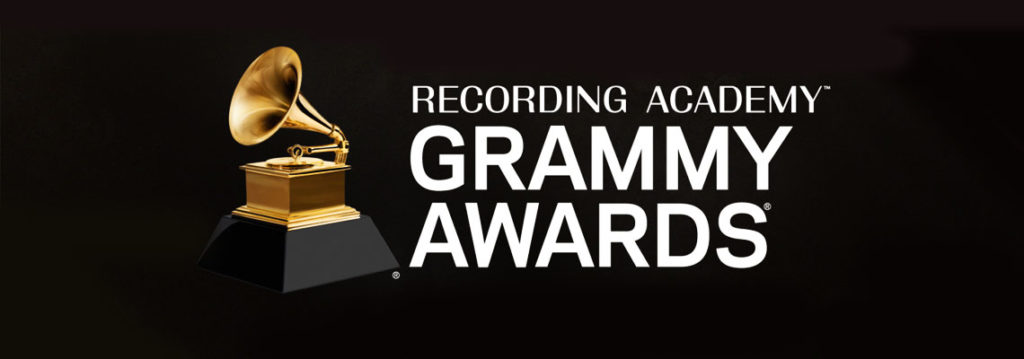
The Grammy Awards are a product of the National Academy of Recording Arts and Sciences, or the Recording Academy. Founded in 1957, the Recording Academy is a professional music organization. All of its members are creative or technical music professionals, such as singers, composers, producers, art directors and engineers. The Recording Academy has two membership levels — associate and voting. All voting members must have to be producers, performers or engineers on six or more tracks of a commercially released album (or 12 or more digital tracks). As a result, the Grammys remain the only award presented to peers, by peers to recognize recording industry excellence. The awards represent excellence from the previous year, so for instance, the 1970 Grammy Awards represented accomplishments for 1969.
In addition to organizing the Grammys, the Recording Academy works with musicians and lawmakers on legal issues like digital music downloading. The Recording Academy has also organized the Grammy Foundation for music awareness as well as the MusiCares Foundation, which provides emergency assistance and addiction recovery programs for people in the music industry. However noble these pursuits are, the Recording Academy is most famous for its annual awards, which bring the stars front and center and often set tongues a-wagging.
Grammy Voting Process
The process begins with members and record companies submitting entries, which are then screened for eligibility and category placement. The Academy’s voting members, all involved in the creative and technical processes of recording, then participate in (1) the nominating process that determines the five finalists in each category; and (2) the final voting process which determines the GRAMMY winners.
Every year, the Recording Academy gathers nominations for the Grammy Awards. Associate and voting members can nominate artists online or by mail, as major and independent record labels that have registered with the Awards department. To be eligible, recordings must have been released in general commercial distribution in the United States between October 1 of the previous year and September 30 of the current year.
Fields Recognized by the Grammy’s
Album Notes, Alternative, American Roots (Americana, Blues, Folk, Bluegrass), Children’s, Classical, Comedy, Composing/Arranging, Country, Dance/Electronic, Film/TV/Visual Media, Folk, Gospel/Christian, Historical, Jazz, Latin, Music Video, Musical Theater, New Age, Package, Pop, Production (Classical), Production (Non-Classical), R&B, Rap, Reggae, Rock, Spoken Word, Surround Sound, World Music
Screening & Nominating
Once the Recording Academy receives the nominations, expert reviewers organize them. Reviewing sessions by more than 350 experts in various fields are held. No judging takes place during this step — its purpose is only to ensure that entered recordings meet specific qualifications and have been placed in appropriate fields such as Rock, R&B, Jazz, Country, Gospel, New Age, Rap, Classical and Latin, among others. The purpose of screenings is not to make artistic or technical judgments about the recordings, but rather to make sure that each entry is eligible and placed in its proper category.
Although people most often associate the Grammys with music, the awards also recognize comedy, spoken word recordings and music videos. As the industry evolves, the Awards and Nominations Committee can also add fields or remove existing ones. The Academy Trustees must approve the changes.
After sorting the nominations, the Recording Academy mails ballots to its voting members. The purpose of this first round of voting is to select the five nominees for each award. To make sure the voting process is accurate, members are directed to vote only in their areas of expertise; they may vote in up to 15 categories in the genre fields plus the four categories of the General Field (Record Of The Year, Album Of The Year, Song Of The Year and Best New Artist.)
Members return their ballots to the independent accounting firm Deloitte, which tallies the votes.
Record of the year, Album of the year & Song of the year: What’s the Difference ?
Record of the year and album of the year may sound like nearly identical awards, but they recognize two different achievements. The record of the year award recognizes one specific track or commercially released single, and the album of the year award recognizes an entire album. Song of the year is a songwriter’s award. The song’s performer(s) and producer(s) are recognized via record of the year.
Final Voting
The Recording Academy then distributes the final round of ballots to each voting member. This time, finalists from a special nominating committee that looks at technical and other specialized awards are included. In this final round, Recording Academy members may vote in up to 15 categories in the genre fields plus the four categories of the General Field (Record Of The Year, Album Of The Year, Song Of The Year and Best New Artist.) The Deloitte tallies the votes and places the results in envelopes that remain sealed until the ceremony.
Results
Results of members’ voting are not known until the GRAMMY Awards presentation ceremony when names of the winners are delivered by Deloitte in sealed envelopes. GRAMMY Award winners are revealed during the GRAMMY Awards telecast.
Most people associate the Grammy Awards with the televised awards show and its live performances. But the awards cover far more categories than you see on TV. In 2018, the Recording Academy awarded Grammys in 84 categories within the 30 fields (pop, classical, R&B, etc.) In addition to the best-known awards like Song of the Year, the Recording Academy recognizes a wide range of musical accomplishments, down to album notes and package design. The Recording Academy presents most of these awards separately on the afternoon before the televised ceremony.
Regardless of whether they receive their award on live TV or earlier in the day, all winners get a small statue of a gramophone. The Grammys gets its nickname from these statues.
